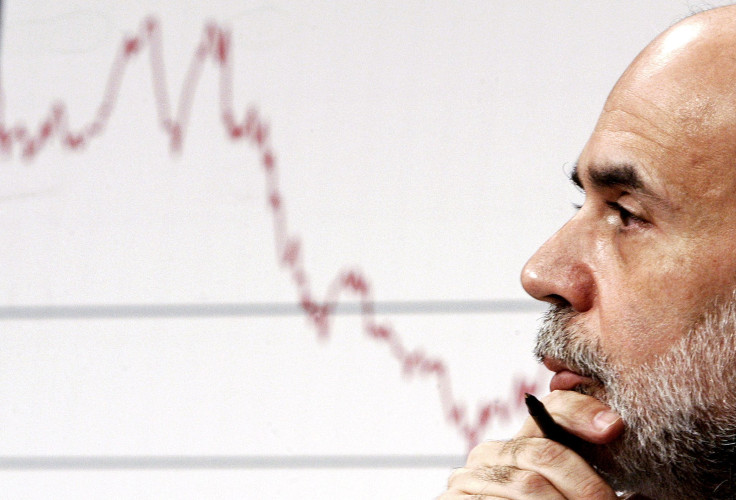October FOMC Meeting Minutes Show Reduction In Fed Bond Buying Likely In ‘Coming Months’

The minutes from the Oct. 29-30 meeting of the U.S. Federal Open Market Committee (FOMC) showed policymakers saw the U.S. economy growing at a “moderate” pace and had an extensive discussion about when would be the right time to wind down its $85 billion-a-month bond-buying program. Many members said they could see the central bank trimming the asset-purchase program at “one of its next few meetings.”
Officials also considered scenarios in which they would lower purchases even before “an unambiguous further improvement in the [labor market] outlook was apparent.”
A couple of participants favored lowering the 6.5 percent unemployment rate threshold, but others noted that such a change might raise concerns about the durability of the committee's commitment to the thresholds.
According to the minutes, most Fed officials thought that a reduction in the interest the Fed pays to banks on their excess reserves could be “worth considering at some stage” – a dramatic new addition to the central bank’s menu of options for easing monetary policy.
“For now, on balance, the Fed will probably wait until early next year before beginning to reduce the pace of its asset purchases,” Capital Economics’ Paul Ashworth wrote in a note. “But we certainly wouldn't rule out a move in December, particularly not if November's labor market data turn out to be as upbeat as October's were.”
Economists, on average, think the Fed will start trimming its monthly bond purchases in March 2014 -- with a small chance of it doing so in January -- but with an accompanying commitment to keep interest rates at record lows, a Reuters poll showed Wednesday.
Bernanke’s Next Move
In a lengthy speech to the National Economists Club Tuesday evening, Fed Chairman Ben Bernanke offered little additional guidance on the possible timing as to when the central bank might begin to reduce the pace of its asset purchases. He noted only that when assessing labor market conditions at future meetings, "we will continue to consider both the cumulative progress since September 2012 and the prospect for continued gains."
Bernanke also stressed that rates could remain at near zero until well after the unemployment rate had dropped to the 6.5 percent threshold.
The Fed’s decision to continue the program in September caught the markets by surprise. Bernanke explained that “the [FOMC] was looking for evidence that job market gains would continue, supported by a pickup in growth.”
“As it happened, the implications for the outlook of the evidence reviewed at the September meeting were mixed at best, while the ongoing fiscal debates posed additional risks,” Bernanke said.
Bernanke also revealed Tuesday during the question-and-answer session that he plans to write and speak about economic issues after he leaves the Fed.
“Before I became a policymaker I was, of course, an academic, and I worked on a lot of issues which are related to the things I have been doing for the last 11 or so years, such as the role of financial markets and financial stability in the economy, the links of financial stability and monetary policy, economic growth,” the former Princeton University professor said.
“So there are lots of interesting things to work on, and I look forward to writing and speaking and taking a little bit more time to contemplate some interesting issues,” he added.
Yellen’s Nomination
The Fed minutes come as the Senate Banking Committee prepares for a vote Thursday on the nomination of Janet Yellen as the next Fed chief.
Yellen, 67, has been the Fed's second-in-command since 2010. If confirmed by the Senate, Yellen would succeed Bernanke, whose second term as Fed chairman expires on Jan. 31, and become the first female Fed chief in its 100-year history.
Analysts expect the committee to approve Yellen’s nomination, which would send it to the full Senate for a vote later this year. Democrats hold a two-vote lead on the 22-member committee, and no Democrat has opposed Yellen’s nomination. Democrats also control 55 of the 100 votes in the Senate, which means Yellen would need to gather only five Republican votes to overcome any procedural hurdles.
Four Senate Republicans have already said they are inclined to support Yellen, according to Bloomberg, leaving her nomination one vote shy of the 60 she needs to be confirmed by the full Senate.
© Copyright IBTimes 2024. All rights reserved.












